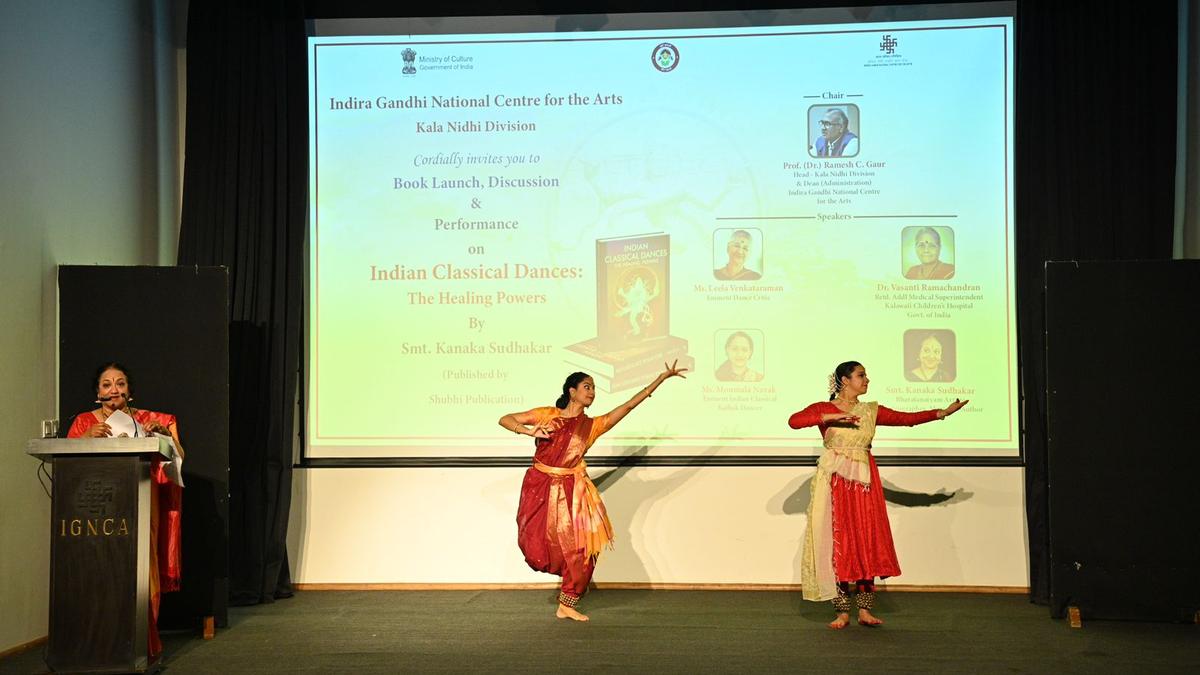
The healing steps
The Hindu
Author Kanaka Sudhakar explores the healing powers of Indian classical dances in her book, emphasizing the importance of education reform.
“Both writing and choreography are art forms that have the ability to provide rasa (emotion) to the artist,” says Bharatnatyam exponent Kanaka Sudhakar, who has published her second book Indian Classical Dances: The Healing Powers.
The book published by Shubhi Publication highlights the failure of the Indian education system in incorporating performing arts, classical dances in particular in the curriculum, as an act of play and science. “I grew up in Russia and as a kid learned Russian ballet, it was compulsory in schools there. When I came to India, I was disappointed by the lack of teaching of performing arts in schools here, and began researching on how to converge the art forms into a theoretical framework and put it into practice,” says Kanaka.
At an event held in Indira Gandhi National Centre for the Arts (IGNCA), New Delhi , her book was launched with a discussion on the same subject followed by a performance. The programme was chaired by Ramesh C. Gaur, Head of Kala Nidhi Division and the Dean of the IGNCA, while the panel discussion included dance critic Leela Venkataraman, Kathak dancer Moumala Nayak, and retired Additional Medical Superintendent Kalawati Children’s hospital, Vasanti Ramachandran as the key speakers.
Kanaka gave the introduction with a descriptive narration of practicing an ideal movement system and the methodology and philosophy behind it. According to her, an ideal movement system should include the aspect of playing along with simultaneous symmetric movements.
In a captivating visual narration of the same, artists Anjali Munjal and Aparajita Sarma gave Kathak and Bharatanatyam recitals respectively to explain the importance of the adoption of Indian classical dance forms and illuminate on the concept of Simultaneous Symmetrical Movements (SSM), where both sides of the body perform the same movement at the same time.
“SSM helps in enhancing coordination, balance and motor skills for daily tasks besides assisting in neuromaturational delays in children that otherwise hamper certain cognitive tasks related to the skeletal nervous system,” said Kanaka. Neuromaturational delay is when a child’s reflexes and nervous system are underdeveloped at a given stage of child development
Her research hypothesized the overriding of neuromaturational delays through the abundance of such mirror movements in the traditional Indian dances. “Every dance style offers ample benefits but some forms may also cause selective overuse. Bharatnatyam is one dance form which offers symmetrical performance on either side, said Leela Venkataraman and urged Kanaka to research each dance form to assess whether both sides of the body get accentuated equally. “There should not be an overload on one side,” she said.











